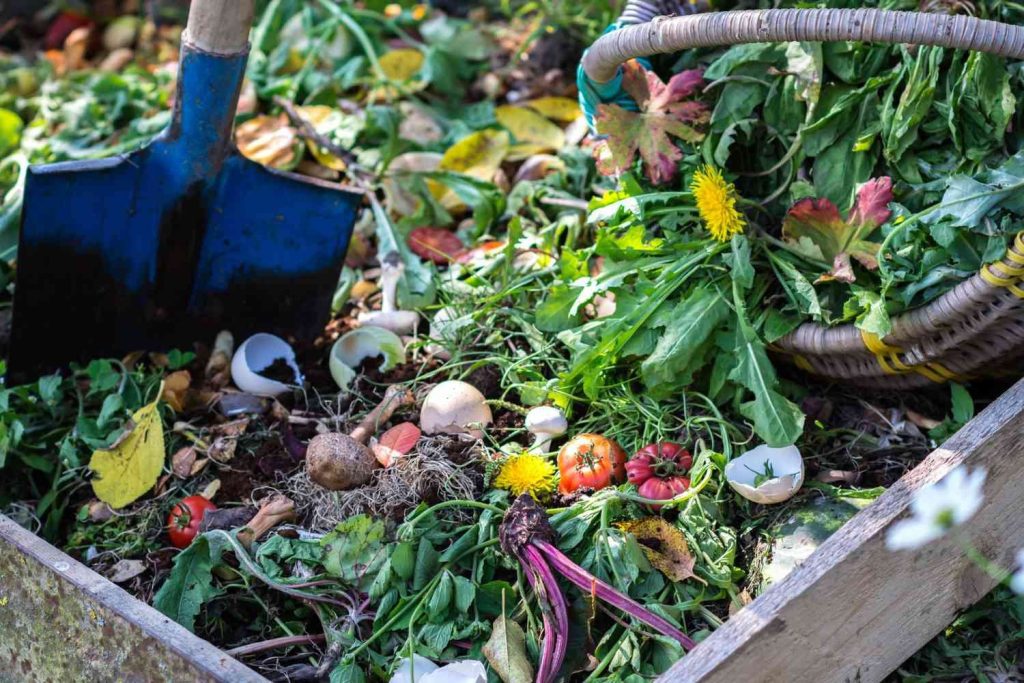How to Build a Compost Pile
Building a compost pile is one of the easiest and most important gardening projects that everyone should undertake.
Compost provides excellent nutrition for plants, builds the soil, feeds beneficial microbes, and keeps valuable resources out of landfills. Given time and exposure to elements, organic material will break down on its own. But you can also speed the process up.
To build a compost pile, start by selecting a dry, shady spot and layer carbon-rich materials (like dry leaves and straw) with nitrogen-rich materials (like kitchen scraps and grass clippings) in a ratio of about 4:1. Mix the layers regularly and keep the pile moist, ensuring it reaches a temperature of around 110 degrees Fahrenheit for effective decomposition.
What Not to Put in your Compost Pile
You can compost anything that rots — except greasy or diseased plants. Foods like cheese or meat do not decay properly and will lead to rodent and non-beneficial insect problems.
Diseased plants are best composted in a container where the heating process can kill the pathogens. A compost pile heats unevenly, unless you turn it every few days being diligent in making sure that all plant material spends time in the center of the pile. So, it’s easiest to just leave the diseased plants out and avoid the possibility of spreading trouble in your garden.
Note: A large compost pile, such as what you can find on a farm can handle just about anything, including all of the above because the pile will become hot enough with the thick layers of material to be able to burn all pathogens, seeds, bones, branches, leaves, etc.

What to Put in Your Compost Pile
Aim for a balance of carbon (dead/brown/dry) and nitrogen (green) material. It is usually recommended that you add 60% carbon to 40% nitrogen. Layer your materials with a slight mist from a garden hose to dampen (do not wet or soak) each layer.
If all you have is green plant material (like grass), you can add newspaper as the carbon source. Other sources of compostable carbon include:
- Straw
- Dry leaves
- Used animal bedding
- Small branches/twigs
- Shredded cardboard
- Sawdust and wood chips
- Paper towels
The Importance of Layering
Every time you add to your compost pile, try to add in layers. There are three basic layers in a compost pile, and putting them down together and in the right order is important:
Layer 1 — carbon: Materials that will provide carbon include hay, sod, straw, leaves, untreated sawdust, chopped corncobs, corn stalks, or small twigs. Put the bulkier items at the bottom of the pile, and lighter materials on top.
Layer 2 — nitrogen: This is the ignition, so to speak, that starts the composting process. Manures, fertilizers, vegetable wastes, grass clippings, garden debris, and starters provide nitrogen for your microbial army.
Layer 3 — topsoil: Avoid sterile potting soils or those soils treated with insecticides, as these do not contain or nurture much-needed microbes.
The Importance of Adding Roughage
Be sure to add twigs and leaves if you have them. Every 8 inches (20.3 cm) or so, add some coarser material to guarantee proper air flow. Twigs or large plant stems can be good. You can use non-compostable material as well, so long as it does not leak toxins into your compost. The compost is, in a way, a living, breathing thing. The decay process is completed by microbes, beneficial insects and worms — all of which need air and water to survive.
The Importance of Stirring Your Compost Pile
Occasionally “stir” the pile. This is done by lifting the middle to the outer edges and the outer edges to the middle using a pitchfork. Also, water if dry. This will ensure proper and even distribution of the decomposition process.
The Importance of Maintaining Your Compost Pile
You will want to keep the center of your pile hot and evenly moist. Whenever the center of the pile dips below 110 °F (43 °C), use a shovel to stir the pile and turn organic material around.
You will know if the pile is hot, because in cooler weather you will see steam. In warmer weather, you can feel the heat when you turn the pile.
As a caution; that too much water will drown the microbes and chase away the worms; this can also cause the pile to get a "rotten" odor. If the pile gets too dry, the decay process stops. Aim for evenly moist.
For less active compost piles, turn and water every 4 to 6 weeks. If you seldom add new layers to your compost, you won't have to stir very often. A small compost pile that's assembled in the fall should be ready to use 3 or 4 months later at the beginning of spring.
How to Build a Compost Pile for Dummies - Watch Video
Resources:
Wiki How



